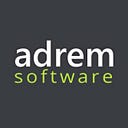The perils of foot-in-the-door network monitoring software licensing schemes
Some of us probably remember the days when there was no such thing as a software trial. You purchased the software and you got what you paid for.
Few decades later we’re completely comfortable with demo software, and in a way, we grew accustomed to trying anything before we buy. And more power to us.
As such, there are numerous ways of trying out software before we buy. There’s the ‘freemium’ pay-as-you-go model, the well-known ‘30 days free’ model, the ‘lite vs. pro’ model, and countless others.
While we all know the got ya catches of freemium-licensed software (after it became a focal point of kids spending their parent’s money on mobile games), there are similar problems with enterprise-level software and other foot-in-the-door licensing schemes.
Let’s dig in.
- Licensing models of network monitoring solutions, unlike other software, can count on constant expansion.
After all, as our businesses grow, so does our network. Each new employee needs a workstation, each face-lift of our website requires new technologies, and our network services become more complex each year. Unless you’re going out of business, your reliance on technology is bound to expand.
So, how can companies creatively capitalize on this trend without the user noticing?
This is where the ‘lite vs pro’ — otherwise known as “x amount of interfaces/sensors/nodes is free” —licensing model steps in. You get a certain amount of free interfaces, sensors or nodes to try and then if you like the software, you buy additional units. Seems like a risk-free offer, right? Not necessarily so. Here’s why:
2. Network monitoring software, by nature, takes time to set up and configure.
Once you download the program, you have to install it on the right environment (Windows or Linux), sometimes you need to compile it, configure SNMP variables, set up proper monitoring and alerts and only then you can begin to evaluate it. That’s right — evaluate. Not even utilize its full potential.
Whatever number of free ‘units’ you initially got (interfaces/sensors/nodes), you’ll find a good use for them almost instantly. By the time you deploy all your free units across your network, you’ll soon realize that you fell into the ‘lite vs. pro’ licensing scheme —that is, the number of units is too low to monitor anything substantial in a business environment.
But what if you need more? What if your network grew? Well…
3. When you already invested much of your time into configuring the ‘x amount of units for free’ solution, chances are that you’ll just pay for the added monitoring capability — regardless of it’s price.
You already invested your time into it. The software works. The environment is ready. You’re familiar with the solution. The ground is ripe for a purchasing the ‘pro’ model now.
Whether you used up your free units or simply now have a more extensive monitoring needs, jumping from free to paid version of the software usually carries a heavy financial burden. Moreover, when it comes to choosing the right NMS, paying attention to how the paid software is further licensed is crucial.
Additive or tiered licensing model — which to choose?
Paid software licensing models can be broken down into two, simple categories:
- Additive licenses
- Tiered licenses
The additive licenses are these, which can grow with your monitoring needs incrementally. For example, if you have a 200 node/sensor/interface license and need an extra 50 nodes/sensors/interfaces covered, you simply purchase the additional 50 units and have a total of 250 nodes/sensors/interfaces license.
The tiered licenses, on the other hand, establish a certain level of service and sell you that amount, regardless of your actual needs.
In order to illustrate this, let’s imagine a scenario where you have 500 nodes/sensors/interfaces which you want to monitor. You add a switch, a router or any other device to your network and you have 550 nodes/sensors/interfaces which you now want to monitor. However, the manufacturer only sells 3 tiers: 500 units, 1000 units and 2000 units. In such situation, you’ll be forced to purchase a 1000 unit license, even though most of the license will end up being unused.
Not all monitoring software is created equal. In fact, it’s incredibly difficult to compare one to another, as most manufacturers vary in definitions of what exactly their unit of license measurement is, and what’s it’s official definition (What counts as a node? What exactly is a sensor? What is an interface?).
However, with all the points mentioned above, this is precisely why you should never look at the initial cost of implementing a network monitoring solution, but rather, at long-term costs.
